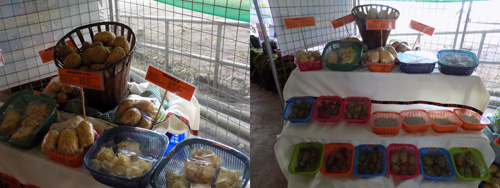 Potato is one of the important high value vegetable crops in the Cordillera, specifically in the provinces of Benguet and Mountain Province, due to its promising economic potentials.
Potato is one of the important high value vegetable crops in the Cordillera, specifically in the provinces of Benguet and Mountain Province, due to its promising economic potentials.
Cordillera is the top producing Region in the country with a harvest of 99,981 metric tons in 2016. The top potato producer in the region is Benguet with 88,771 metric tons or 88.8% of the total potato production in the region, followed by Mountain Province with 11,090 metric tons or 11.1%. Meanwhile, Ifugao only shared 0.1% of the total production in the region.
However, along with its great potentials, “are problems confronting farmers engaged in potato production,” according to Teresita D. Masangcay, a Senior Research Specialist of the Benguet State University – Northern Philippines Root Crops Research and Training Center (BSU-NPRCRTC).
Addressing these problems was the focus of the Technology Forum on Potato during the Farms and Industry Encounters through the Science and Technology Agenda (FIESTA) of the Highland Agriculture, Aquatic and Resources Research and Development Consortium (HAARRDEC) at Wangal, La Trinidad, Benguet.
The FIESTA had the theme, “Kinabaknang di Daga, Siya san Biag” (Wealth from the Land, Sustain Life). Aside from potato, it also promoted coffee, strawberry, and sweetpotato.
Masangcay shared trends showing high market demand but low supply for potato. This was mainly due to low seed quality and insufficient seed supply.
To solve this, Masangcay proposed the use of non-conventional planting materials such as the pea-sized tuber and stem cutting, as well as the use of the local potato variety, ‘Igorota.’
“This is the variety developed in the highlands recommended for better production and income for our farmers. It also addresses the issue of low seed quality because it is high yielding and moderately resistant to late blight and leaf miner,” Masangcay further explained.
She also mentioned that bacterial wilt and cyst nematode are also contributing to low production. “Although there are no available varieties resistant to these diseases yet, proper management can be used to limit the damage such as the use of clean planting materials, removal of infected plants, crop rotation, and other farm practices.
One such practice is the use of Trichoderma, which is a beneficial microorganism and an effective bio-control agent in managing potato diseases. Trichoderma is available at the Bureau of Plant Industry (BPI).
Other resource speakers included Cynthia G. Kiswa, Senior Research Specialist of BSU-NPRCRTC speaking on disease management and Dr. Rhonda Oloan of BPI – National Crops Research and Development Center (BPI-NCRDC) discussing cyst nematode and bacterial wilt using Trichoderma.
As conceptualized by DOST-PCAARRD, FIESTA aims to show the complete sphere of research and development as it treats with equal importance the whole agricultural value chain from production to processing to technology mainstreaming.
Through FIESTA, PCAARRD and its partners gather the various players of agriculture, aquatic, and natural resources S&T, primarily the technology generators, farmers, and micro, small, and medium enterprises (MSMEs) to showcase regional AANR technologies, innovations, products, and services; assist in the diffusion of technologies for better farming opportunities; and provide a true encounter of various research and development beneficiaries to maximize the benefits of particular products and commodities.
